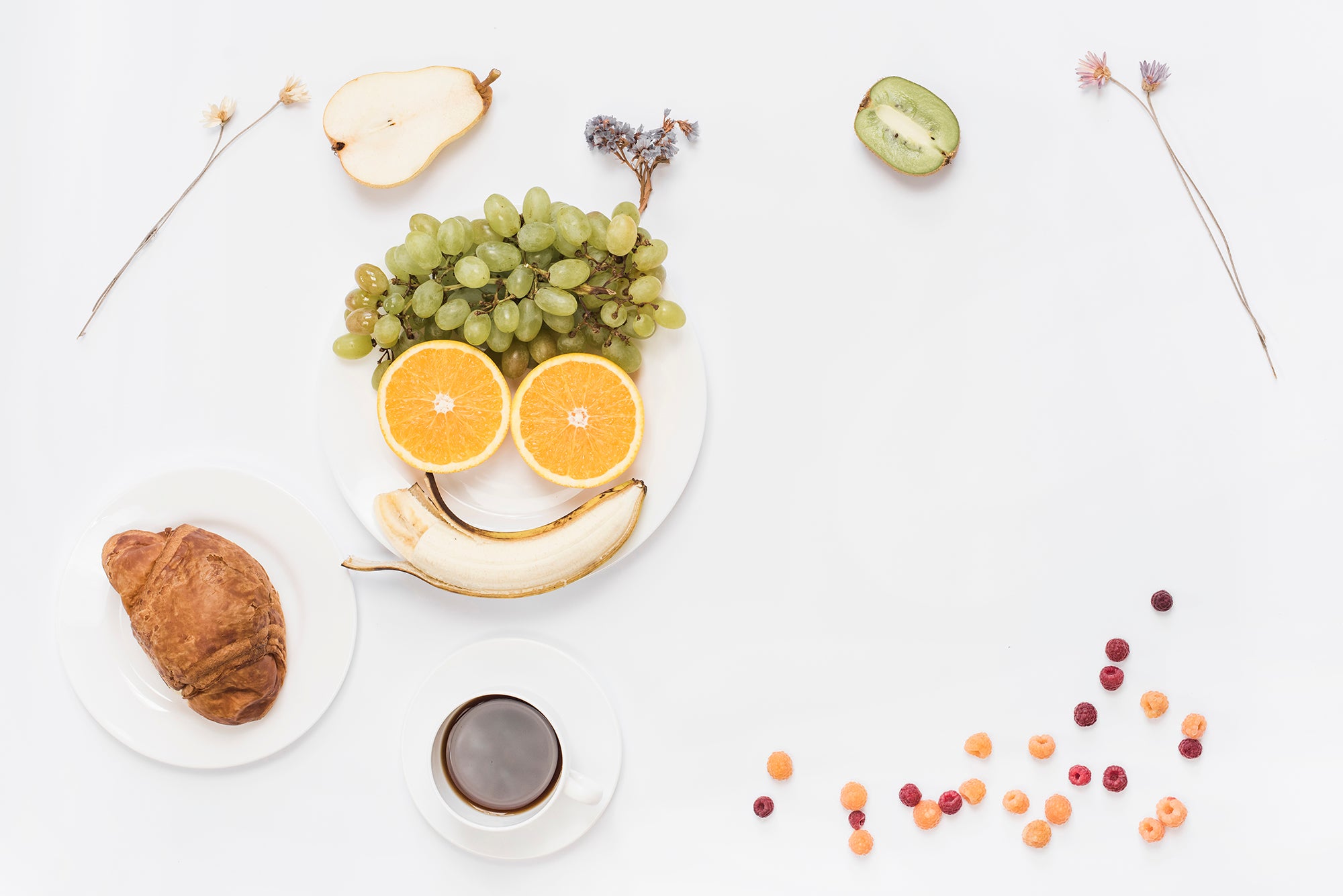Did you – like most others and myself – over indulge in sugar and alcohol during the holidays and are now seeing it in your skin and feeling it in your body? Are you noticing skin sluggishness, yellowing around the eyes, dark circles, dehydration, acne or rashes? If you relate to any of the symptoms prior, your skin is warning you that something is wrong with your diet habits.
It’s Self-Care January – time to prioritize your well-being and establish healthier routines for a positive beginning to the year.
But this is not another New Year’s diet blog. We’re here to inspire a lifestyle change which will slow down aging skin and enhance the way your body works and feels.
Balancing Intentions
Before we talk about anything food-related, there’s a caveat. But it’s a good one– we promise!
The start of a new year is a natural time to re-evaluate routines and set goals. We believe in balance, sustainability and most importantly – fun! When it comes to setting objectives we want you to succeed in your intentions. Set yourself up for success!

At Bellini’s, we realize “all or nothing” thinking isn’t sustainable long-term. We follow The Pareto Principle, which suggests that 80% of results come from 20% of the work. But we can think of it in terms of meeting goals as well — if you keep to your goal 80% of the time, you can take 20% to cheat a little! You deserve to enjoy life and all its wonderful experiences. “Good enough" becomes a benchmark to strive towards. You can take this idea and use it towards diet habits, skin routine, and so many other things.
Yet, when it comes to setting goals in the new year, we see people fail because they can’t compromise. Substitutions are in, and black and white thinking is out!
We want to help inspire your health journey, which in turn will improve your skin. After all, the skin is the waste dump of the body – anything you see happening on your skin is connected inward to your overall health.
The bottom line is, you have to be healthy to have beautiful skin. I say this to my clients all the time – we can’t escape our own biology.
Your Skin & Your Health
 Did you know your eating habits affect the overall tone and health of your skin? You most likely have heard drinking plenty of water helps keep your skin clear, and while that's definitely true, it's examining the type of food you are eating in combination with your blood type that will provide dramatic results in your skin.
Did you know your eating habits affect the overall tone and health of your skin? You most likely have heard drinking plenty of water helps keep your skin clear, and while that's definitely true, it's examining the type of food you are eating in combination with your blood type that will provide dramatic results in your skin.
Eat Right for Your Type by Dr. Peter J. D’Adamo looks like another diet fad book, but it is much more. This diet theory and book has been around for 25 years and is validated by more doctors and scientists as the years go on. The book dives into the history of each blood type and explains why certain foods are good or bad for each.
Eating foods that are good for your blood type is for more than just your gut. If your blood does not agree with the foods and drinks you are ingesting, it can be reflected in the skin as well. Whether that be by breaking out, causing a rash, flushed skin or any number of other reactions. If your organs start to struggle, you’ll see it on your skin.
It's hard to think about limiting yourself to certain specifications of food just because your blood dictates it so. But remember the Pareto Principle from earlier? If you are able to eat what is ideal for your blood type 80% of the time, then take 20% of the time to dine unrestricted! You deserve to enjoy life and all its wonderful experiences. It’s all about changing our diet habits in a way that’s sustainable that will have an impact on our skin, how we age and feel overall.
Over the years of working with people, I have noticed, if you are in tune with how your body feels, you naturally gravitate towards foods that make you feel good.
Here's What D'Adamo Recommends for Each Type:
|
|
|
|
Glycation & Sugar
 The American diet often consists of too much refined sugar without the fiber to properly process it all. And what happens when we have too much sugar (and alcohol) in our diet? Glycation.
The American diet often consists of too much refined sugar without the fiber to properly process it all. And what happens when we have too much sugar (and alcohol) in our diet? Glycation.
Glycation is a chemical reaction that occurs when sugar in the bloodstream binds to proteins or fats without the control of an enzyme. This process forms molecules known as advanced glycation end-products (AGEs). AGEs can accumulate in various tissues throughout the body, affecting the normal functioning of cells and contributing to health issues.
The reaction can lead to the impairment of collagen and elastin, which are essential for maintaining the structure and elasticity of skin, blood vessels, and other tissues. In other words, sugar ages you and there’s no way to reverse the glycation once the damage has been done.
Not only does refined sugar affect your skin, it affects your sleep. The majority of cellular and neural repair is done while sleeping. That means excess alcohol impedes this process. Hence the hangover – in feeling and looks.
Substitutions
 Now you have a general idea of optimal diet habits for your blood type and know to limit refined sugar, we want to remind you – it’s not “all or nothing” here. Another way to stay on track for your goals is to substitute, not deprive!
Now you have a general idea of optimal diet habits for your blood type and know to limit refined sugar, we want to remind you – it’s not “all or nothing” here. Another way to stay on track for your goals is to substitute, not deprive!
You can have some sugar. You can have some alcohol. Moderation is key or you’ll start to see it in your skin and the way you age.
But say you want to give up alcohol for a while, there are plenty of non-alcoholic substitutions that have less sugar in them than real alcohol. Stopping suddenly can be really challenging and disruptive.
Speaking of sugar, choose more organic sugar substitutions. Delve into the world of agave, maple syrup, raw honey, stevia, date sugar or coconut sugar. Choose fruits or high fiber snacks to solve your sweet tooth.
You can also buy more organic food items, seeking less processed or less genetically modified foods. For instance, there are classically milled grains available online or possibly at your favorite store. Less pasteurized dairy products can also be easier on the body. America’s farming practices can be very hard on our physical well-being. The more natural, the better for you.
“Cuisine is flavor and flavor is cuisine”- by Giusseppi Bellini
As the daughter of Giusseppi, I can't eat healthy for the sake of it -- it has to be good for you and taste good too. Being in Oregon, I'm lucky to live in such a food conscious place. Below are some of our favorite ideas.
Pre-made sweets--
- Mitica Fig and Almond – a date and nut wedge confection.
- Honey Mamas – refrigerated chocolate truffle bar of many flavors.
- Rip Van Wafels Snickerdoodle Stroopwafels -- Craving a waffle but want a healthier option? These only have three grams of sugar.
Drinks--
- Phony Negroni - As the name suggests, it's a non-alcoholic negroni, which is a bitter-sweet cocktail, originally made of equal parts gin, vermouth rosso, and Campari, generally served on the rocks.
- Spindrift - Sparkling water with real fruit in a can. It tastes so much better than artificially flavored carbonated water and has way less sugar than juice.
- OliPop - Soda made with plant fiber and prebiotics -- and with far less sugar than normal soda.
More complex carbohydrates (more fiber so it doesn't turn it into sugar)--
- Martelli Pasta - pasta from Italy / old world practices
- Camas Country Mill - Oregon flour from old world practices original grain
- Tabor Breads - all made with Camas Country Mill; local to Portland, OR, whole grain bread and pastries -- you'll taste and feel the difference
Pears Poached in Vanilla Syrup
Peel the pears and cut them in half. Use a pear corer or a spoon to carefully remove the seeds and the narrow fibrous strip that goes up the stem. Bring the water to a boil with the sugar, vanilla bean, and lemon peel. Stir to dissolve the sugar; then lower the heat. Add the pears and cook them gently until they are translucent around the edges; then remove them to a bowl. Scrape the seeds out of the vanilla bean, and add the pods to the pears; then pour the syrup over the fruit. Cover and refrigerate until chilled. Serves six. Recipe from The Greens Cookbook by Deborah Madison |
“Good Enough”
 Ultimately, remember the 80-20 rule and substitutions to achieve your goals. Keep in mind sugar ages you but it’s nearly impossible to cut it completely from an American diet. You don’t have to be perfect all the time, strive for “good enough” and see where that takes you this year.
Ultimately, remember the 80-20 rule and substitutions to achieve your goals. Keep in mind sugar ages you but it’s nearly impossible to cut it completely from an American diet. You don’t have to be perfect all the time, strive for “good enough” and see where that takes you this year.
------------
Sources --
https://www.webmd.com/diet/a-z/blood-type-diet
https://dadamo.com/txt/index.pl?1003
-----
This blog post was written by Moss Hatheway




